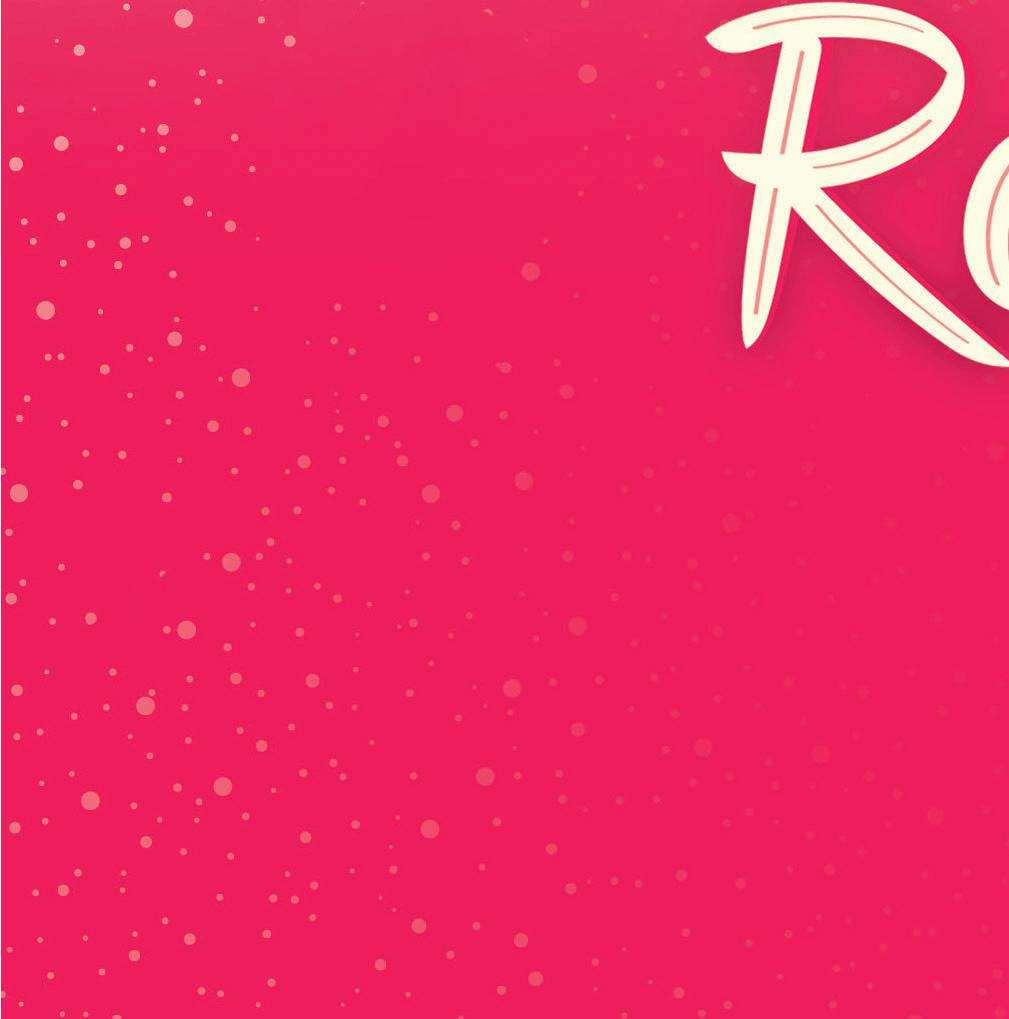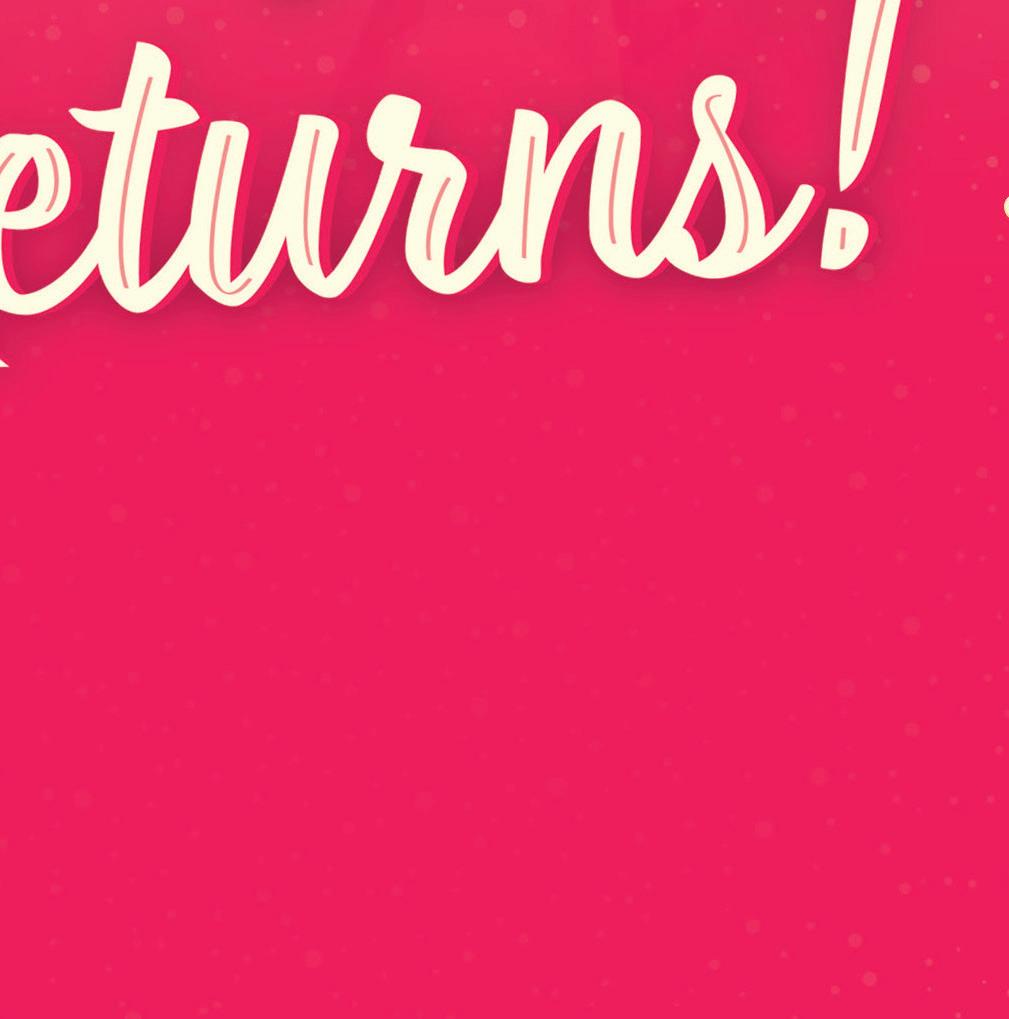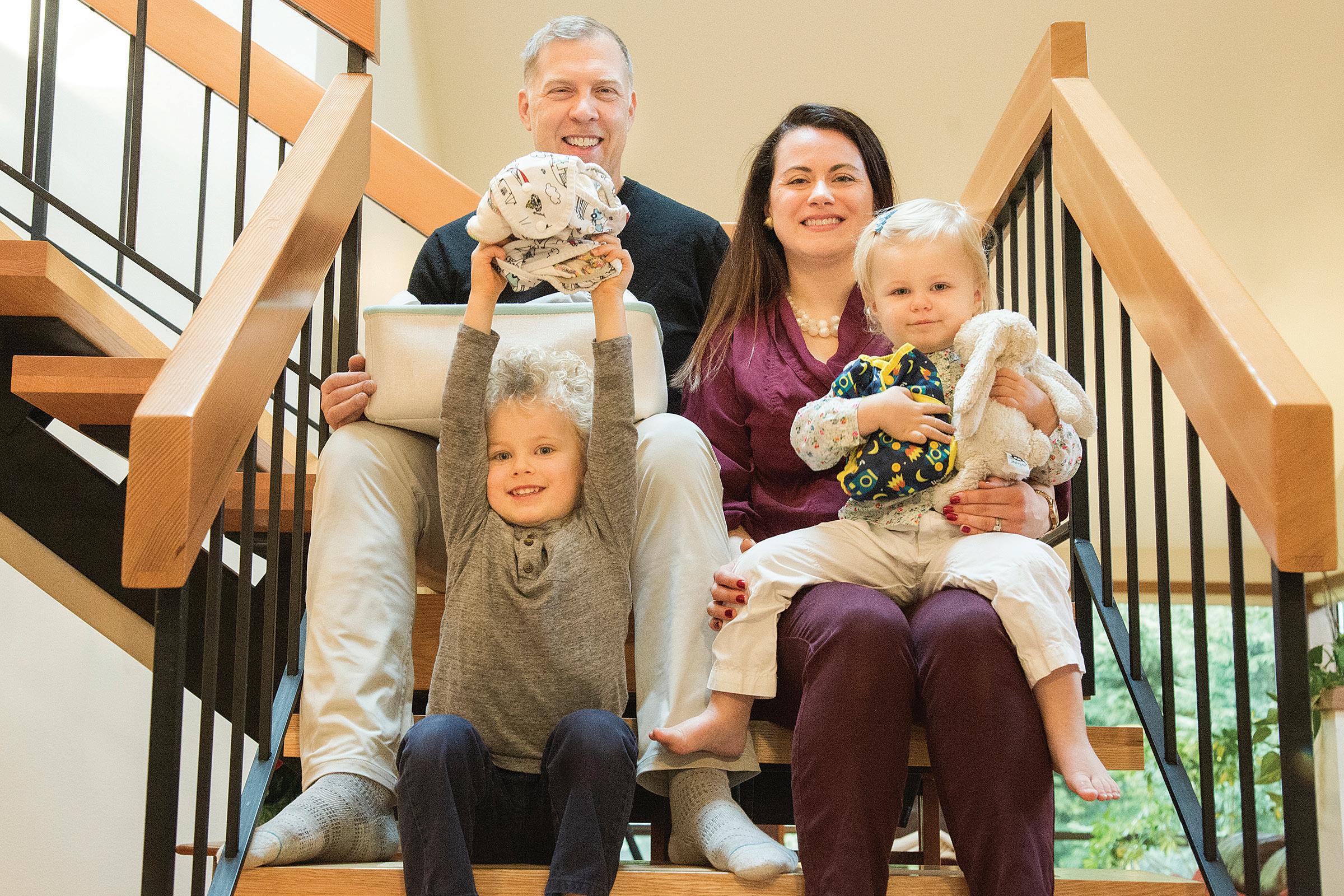
5 minute read
MAKING HOME
Unlock more from our magazine at seattleschild.com
Get us delivered to your inbox!
Sign up for our eNewsletters
Find local resources for busy parents
Visit our family-friendly directory of businesses
Don’t miss an issue!
Subscribe and get Seattle’s Child mailed to your home
„ Find more nest-making ideas at seattleschild.com
»MakingHome
Living big in small and unique spaces
Stephanie Wall keeps packaging waste out of the house she shares with husband Zach and kids Wesley and Klara.
Home sweet zero-waste home
A family with small kids commits to a low-trash lifestyle
by HALLIE GOLDEN / photos by JOSHUA HUSTON
Stephanie Wall’s home in Shoreline doesn’t have plastic toothbrushes
or disposable diapers or a refrigerator lined with one-time-use tubs of storebought food, all of which you might see in a typical home with young kids.
Instead there are bamboo toothbrushes, reusable cloth diapers and a freezer stocked with canning jars filled with homemade purées and vegetable broth.
That’s because she and her husband, Zach, along with their two children, Wesley, 4, and Klara, 2, practice zero-waste living.
Wall, who is co-founder and chief of staff of the nonprofit group Seattle Zero Waste, explains the lifestyle is about reducing waste. (Her family only has enough garbage to put out a medium trash container a handful of times a year.) But the practice is also very much centered on being a thoughtful consumer.
“It actually starts outside of the home,” she says. “So, refusing things that we don’t need outside of the home, and really thinking
«Making Home
CONTINUED
about what we consume, what we purchase, because obviously most things come in packaging.”
For Wall and her family, that has meant buying secondhand first. It’s also meant taking the family to the local farmers market every Saturday to stock their kitchen and to introduce her children to the farmers. (During the COVID-19 pandemic, Wall’s husband has gone alone.)
Their family has also made sure to support local businesses, and when something is broken, rather than throwing it away, they get it repaired. Wall gives the example of recently taking her couch seat cushion to an upholstery store so they could fix its broken zipper.
“Once you start really trying to reduce waste in all ways, not just packaging, you start supporting local businesses and the repair economies,” she says.
In the kitchen, they skip reusable plastics and instead use stainless steel and glass containers, as well as silicone Stasher bags.
When the holidays come around, Wall says, her family and friends have been very good about giving gifts that fit into their lifestyle, including

Stephanie and Zach are teaching Wesley and Klara about the zero-waste lifestyle now, while they’re young.
things that are reusable or upcycled (creatively reused), and using reusable fabric gift bags. In the past, her mother-in-law has given each family unit towels to draw on and exchange with each other.
Wall also has asked loved ones for no-waste gifts that can be used or experienced, such as bath bombs or theater tickets.
She has been living the
It’s so much more than a gift
Washington State Heirloom Birth Certificate
A portion of the proceeds from each birth certificate helps children grow, thrive and learn in safe and loving environments.
This official birth certificate is personally signed by the Governor and State Registrar.
Certificate is 8 1/2 x 11 and includes the name, date and place of birth, as well as the name and birthplace of the parent(s).
Framable keepsake
For each $40 purchase of an Heirloom Birth
Certificate, $25 is tax deductible.
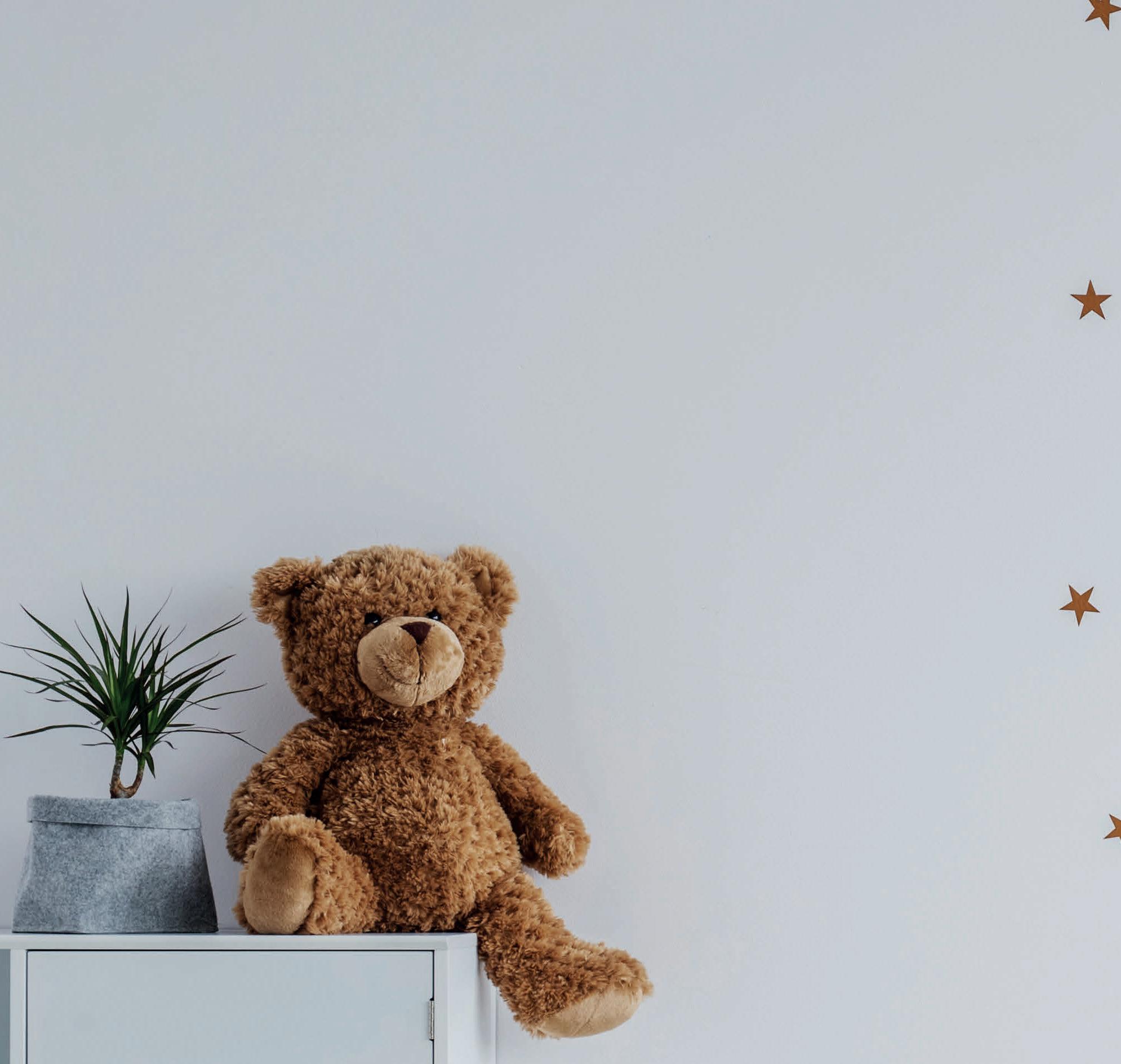

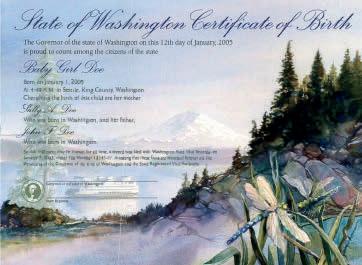

To find out more information on Children’s Trust and child abuse prevention in Washington State visit https://www.dcyf.wa.gov/about/ government-community/communityengagement or visit Department of Health to order your own Heirloom Birth Certificate.
zero-waste lifestyle for more than a decade, ever since she discovered Bea Johnson’s blog Zero Waste Home.
Wall was raised in a home where her father owned a small business, and her mother made a lot of her outfits and cooked. Not being wasteful was very much a part of their daily life.
Once she read about Johnson’s lifestyle, she says, “Everything kind of clicked and made sense.”
Her lifestyle also has a lot to do with the environment and trying to make a small difference when it comes to keeping things out of landfills. Her family takes along their own reusable cloth or mesh produce bags, instead of taking plastic bags from a store or stand. There are times when food from the farmers market or CSA comes in plastic bags, so she makes sure to reuse them, lining the few tiny trash cans they have around the house with the bags.
When Wall and her husband had kids, she says, they had to make some adjustments, but after practicing the zero-waste lifestyle for so long, it was a natural switch.
Today, she makes sure to talk with her children about their family’s lifestyle so they understand it and can incorporate the habits into their own lives when they’re older.
But it’s already clear that they’re getting it.
On a recent adventure on his scooter, Wesley announced he would be making a trip to a Buy Nothing pickup, and then on to the local Goodwill.
Wall’s tips Making the switch to a zero-waste lifestyle
q Do an initial trash audit. Make sure to not just look at your landfill trash, but also your recycling and compost. q Find a community. There are many sustainability groups, both on- and offline, and being a part of them can help with making the switch. q Just start somewhere. The same starting point is not going to be right for everyone, so whether it’s in the bathroom, the kitchen or the laundry room, Wall suggests families just pick a place and make the initial change to produce less waste. q Start small. Swap out one of your habits for a more sustainable version and try it. Once it feels more natural, make another small change. q Talk with your children. No matter how old they are, make sure your children are an active part of this process.
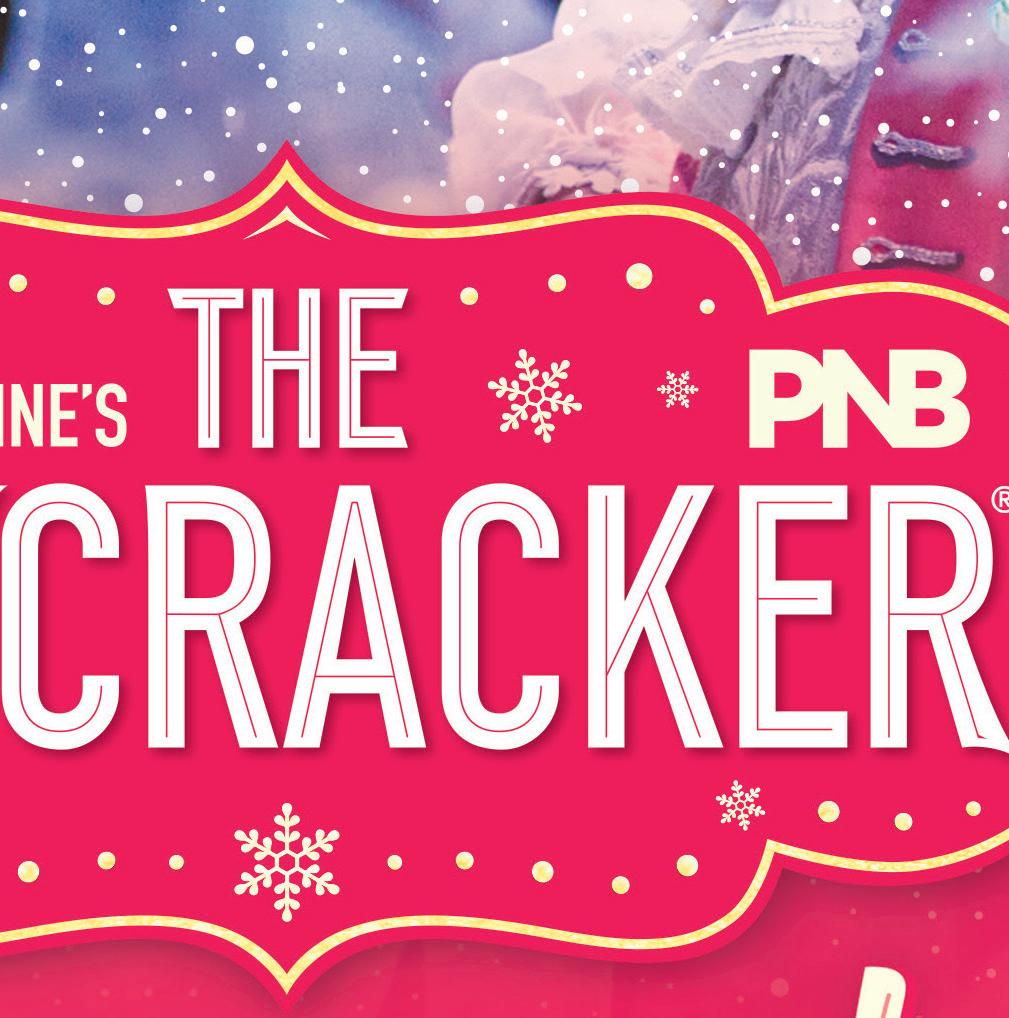

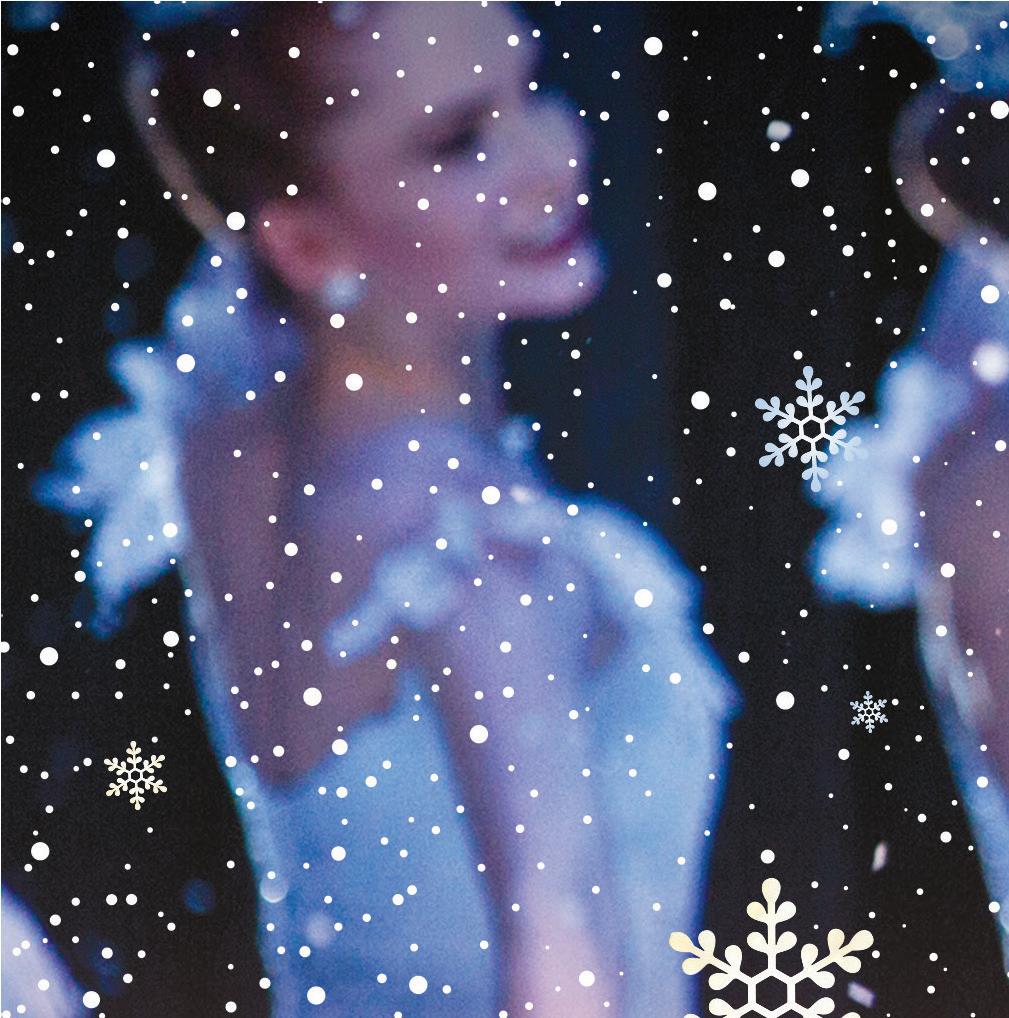
FULL PAGE
PNW BALLET

